Diagnosis
Clinical Symptoms of FIP
If you are reading this page, it may have led you to suspect that your cat has FIP. If so, your cat may have some of the symptoms listed below.
For FIP, cats are predisposed to 2 years of age, but older cats may become ill.
In any case, the manifestations of FIP are in themselves very unspecific, and the diagnosis is usually made when several symptoms are concurrent.
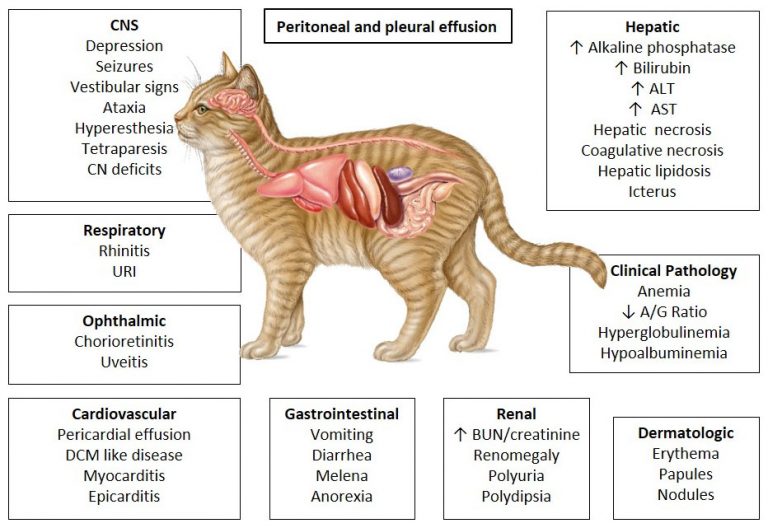
WARNING !!!
Especially with wet FIP, effusion can occur in the pleural (thoracic) cavity. Measure the cat’s respiratory rate. Normal respiratory rate is around 20-30 breaths per minute. If you notice a higher respiratory rate or very shallow breathing (see below), seek the help of a veterinarian immediately !!! It may be necessary to drain a portion of the fluid from the thoracic cavity. Otherwise, the cat is at risk of suffocation or heart failure. Your cat needs first aid.
CAUTION
Please note that some of the following images contain professional medical anatomy content that may cause discomfort.
Wet/Effusive FIP
- Wet FIP is typical especially for young cats
- Abdominal distention
- Sometimes fluid appears in the chest cavity, causing it to make breathing difficult and faster, and the heart is also very stressed.
- Anorexia
- Fatigue
- Apathy
- Periodic fevers lasting more than 4 days that do not respond to ATB or antipyretics (> 39.2 ℃)
- Weight loss
- Jaundice may appear
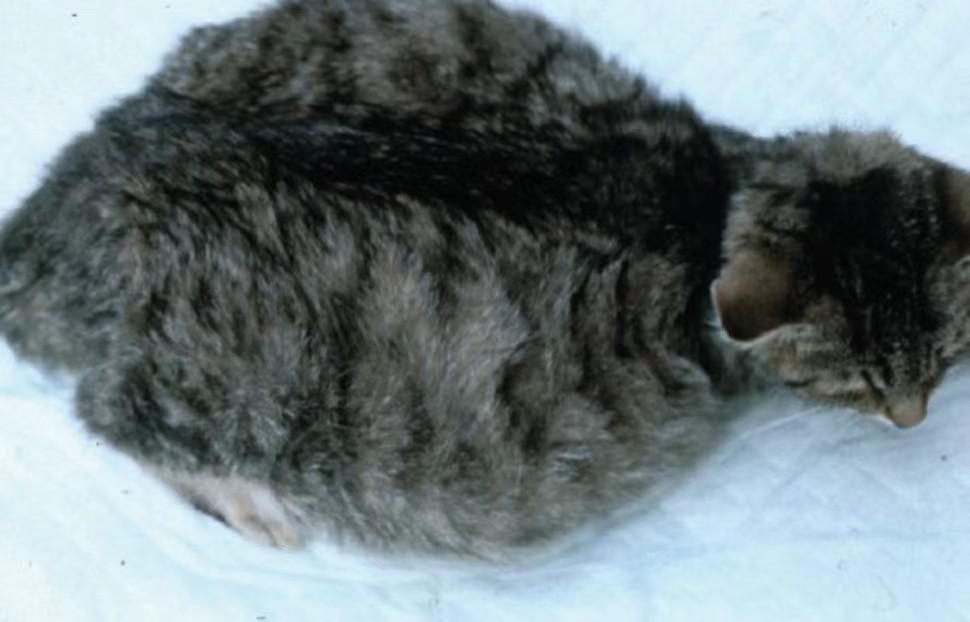
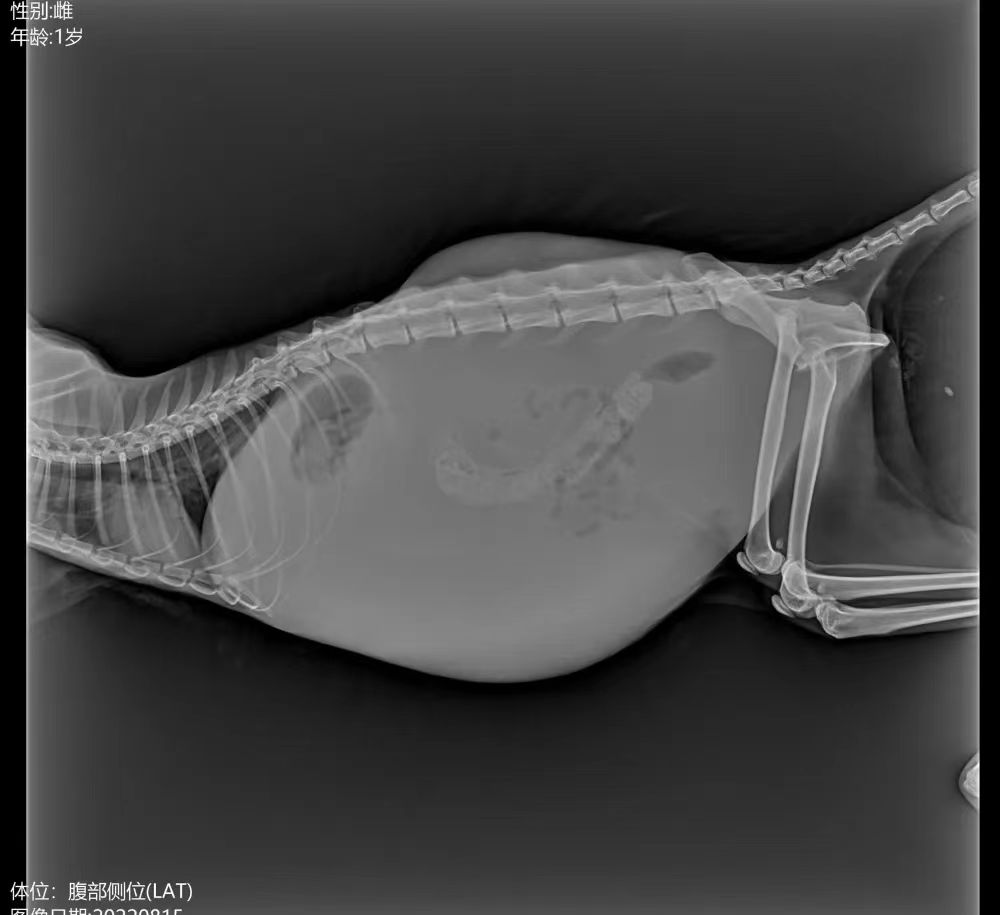
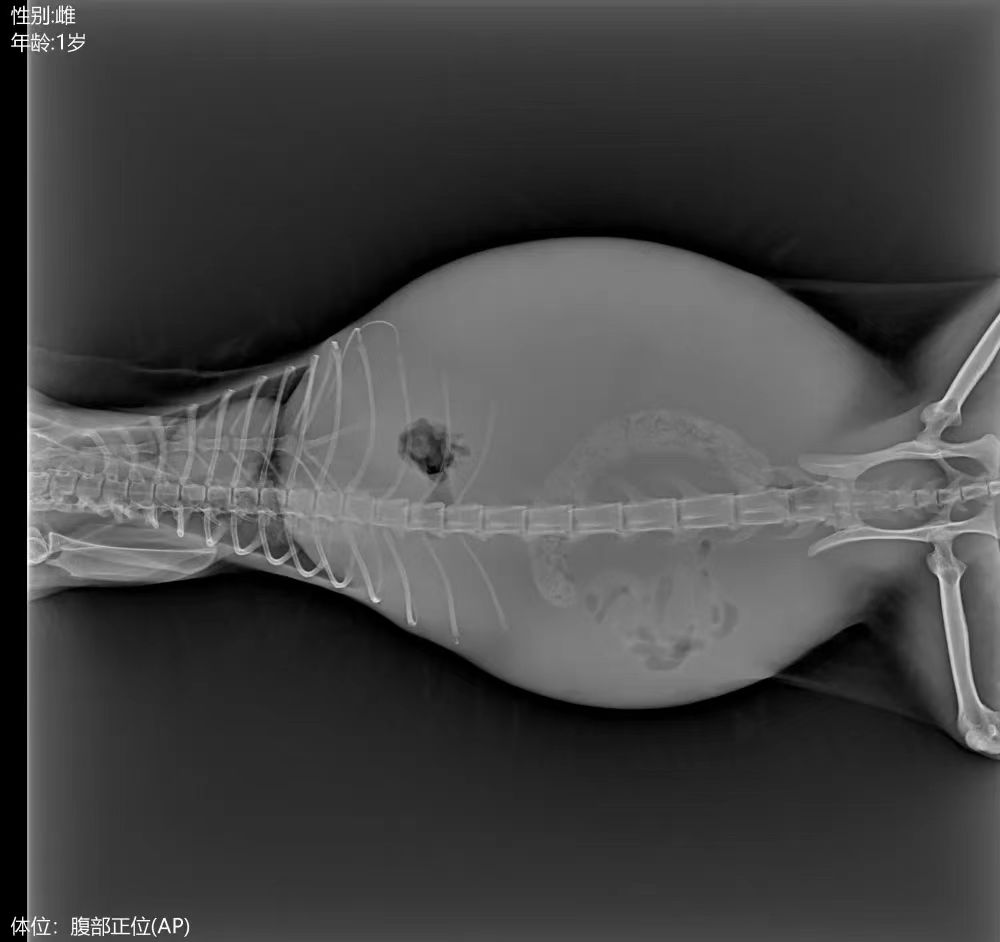
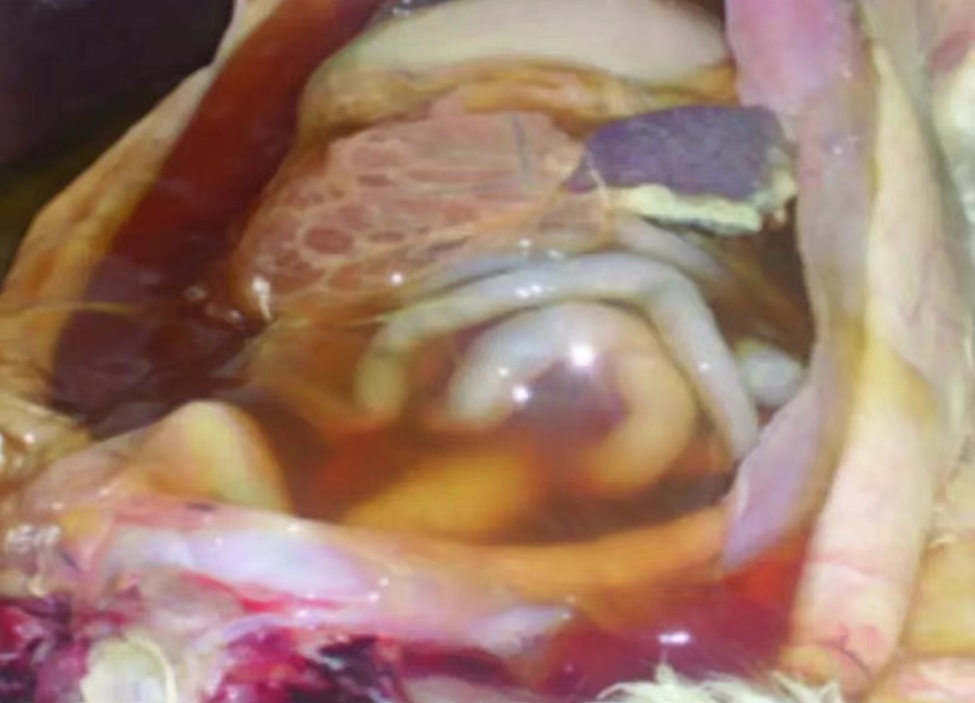
Picture from: Diagnostic Methods for Feline Coronavirus A Review Saeed Sharif
Dry/Non-Effusive FIP
- Dry FIP is typical especially for older cats
- Anorexia
- Fatigue
- Apathy
- Periodic fevers lasting more than 4 days that do not respond to ATB or antipyretics (> 39.2 ℃)
- Weight loss
- Jaundice may appear
- Pay special attention if the symptoms of the disease have lasted for a long time (more than a month). Dry FIP at a later stage may progress to a wet form, or to even more complicated forms, such as ocular or neurological FIP.
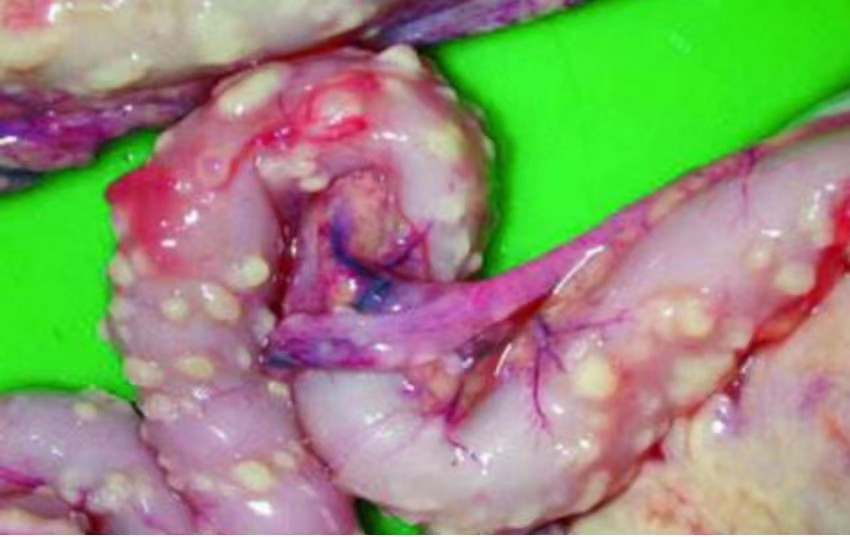
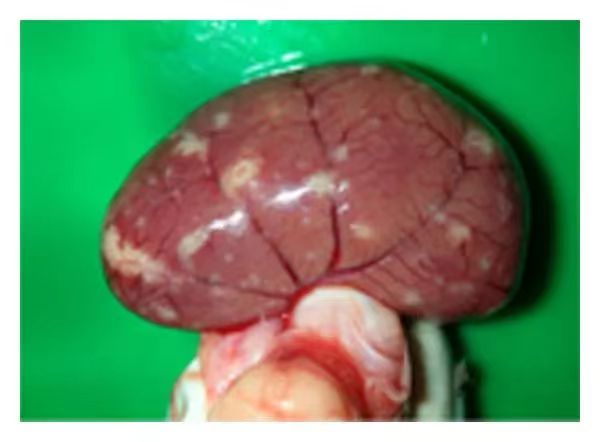
Granulomatous lesions may be found on the capsule surface or within the liver and kidneys
Picture from: Diagnostic Methods for Feline Coronavirus A Review Saeed Sharif
Ocular FIP
The same symptoms as with dry FIP, plus the ones listed below.
- Ocular lesions (uveitis – inflammation of the uvea, middle layer of the eye ball)
- Bloody or cloudy eye
Ocular FIP is usually associated with dry FIP, rarely occurring in combination with the wet variant, although this is not completely ruled out.
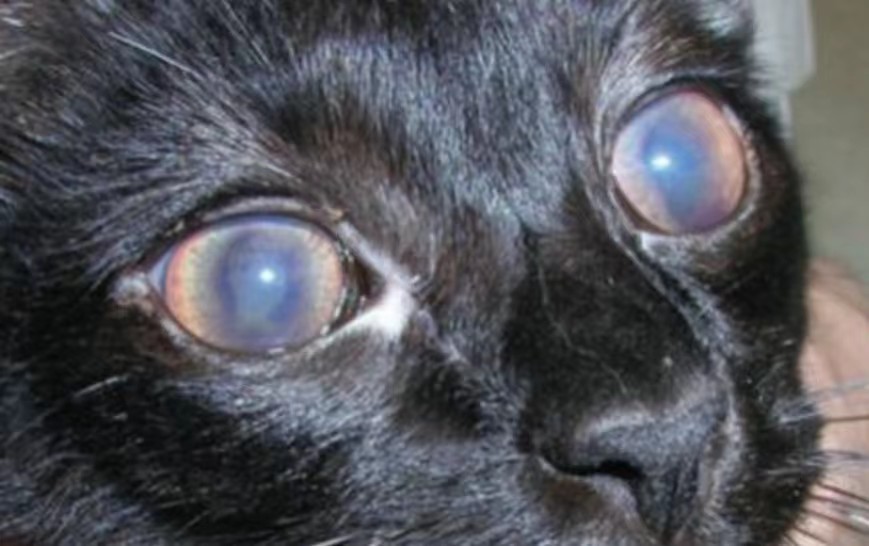
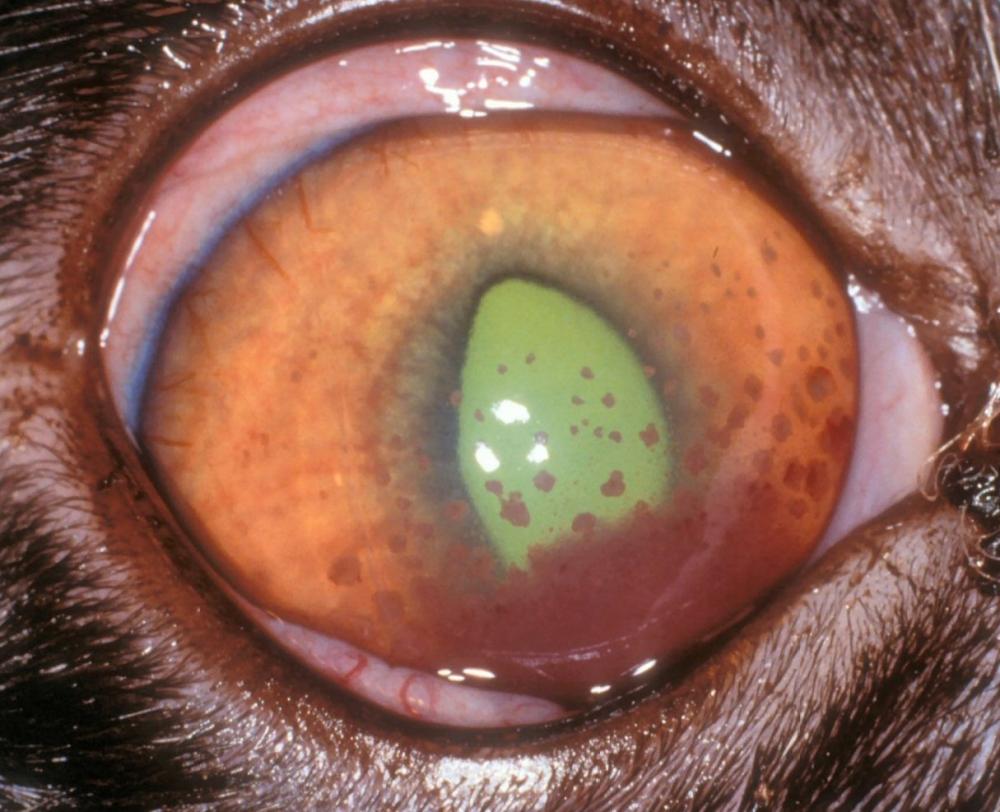
Anterior uveitis of a cat with FIP
Neurological FIP
The same symptoms apply as for dry FIP and in addition the following may occur:
- chills,
- weakness in the hind legs,
- rigidity,
- bradykinesia (slow motion),
- balance disorders,
- confusion,
- urinating and performing needs outside the toilet,
- incontinence,
- seizures,
- cramps,
- paralysis,
- disorientation,
- shock conditions.
The spectrum of neurological symptoms is practically unlimited and depends on which areas of the central nervous system are affected.
Dr. Pedersen is of the opinion that the diagnosis of FIP can also be confirmed by starting treatment with GS441524. He recommends it especially in neurological FIP, where most examination methods are very expensive. The cat responds very quickly to the start of treatment with GS. If this happens, it is essentially a confirmation of the diagnosis of FIP.
Examination by a veterinarian
Any of the above symptoms should lead you to a veterinarian, where you should work to confirm or refute the diagnosis of FIP. He should do basic examinations and, if necessary, reach for some specialized ones.
- basic biochemistry
- basic hematology
- FIV / FeLV test
- medical ultrasound
- electrophoresis of serum proteins
- in wet FIP it is good to make a punction and send the fluid for RT-PCR test, or at least visually evaluate its color and consistency…
- in dry FIP RT-PCR test from a sample of mesenteric lymph node (biopsy)
- Rivalta test – used to differentiate between exudate and transudate
- The frequently used SNAP test for antibodies from blood usually has no meaning, as it cannot detect whether it is a mutated FIPV virus or just a common and harmless coronavirus FCoV, which is estimated to have about 70-80% of cats.
- Serum Amyloid A
- Alpha-1 acid glycoprotein
The findings for FIP usually correspond to the following findings:
- The effusion in wet FIP is usually yellow, viscous, sticky, fibrin fibers are formed in it. The presence of liquid will also be shown by sonographic examination. See pictures below.
- enlarged lymph nodes visible on sonography
- in dry FIP, local inflammatory foci (granulomas) often occur in some organs, such as the liver or kidneys. They are visible on ultrasound.
- high coronavirus titer (≥1: 3200)
- isolated exudates around organs in abdominal cavity
Hematology and Chemistry
Selected blood parameters important in the diagnosis of FIP
| Parameter | Wet FIP | Dry FIP |
| Hematocrit | reduced | normal to decreased |
| Reticulocytes | normal to decreased | normal to decreased |
| Neutrophils | elevated | elevated |
| Lymphocytes | decreased | normal to decreased |
| MCV | decreased | decreased |
| Total protein | normal to elevated | normal to elevated |
| Albumin | normal to decreased | normal to decreased |
| Globulins | elevated | elevated |
| Gamma globulins | elevated | elevated |
| A/G Ratio | decreased(<0.7) | decreased(<0.7) |
| Bilirubin | elevated | normal to elevated |
| SAA, AGP | elevated | elevated |
Efusion fluid in wet FIP
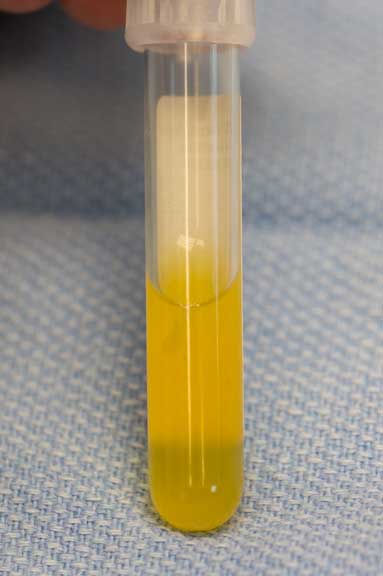
Characteristic color of peritoneal effusion collected by abdominocentesis
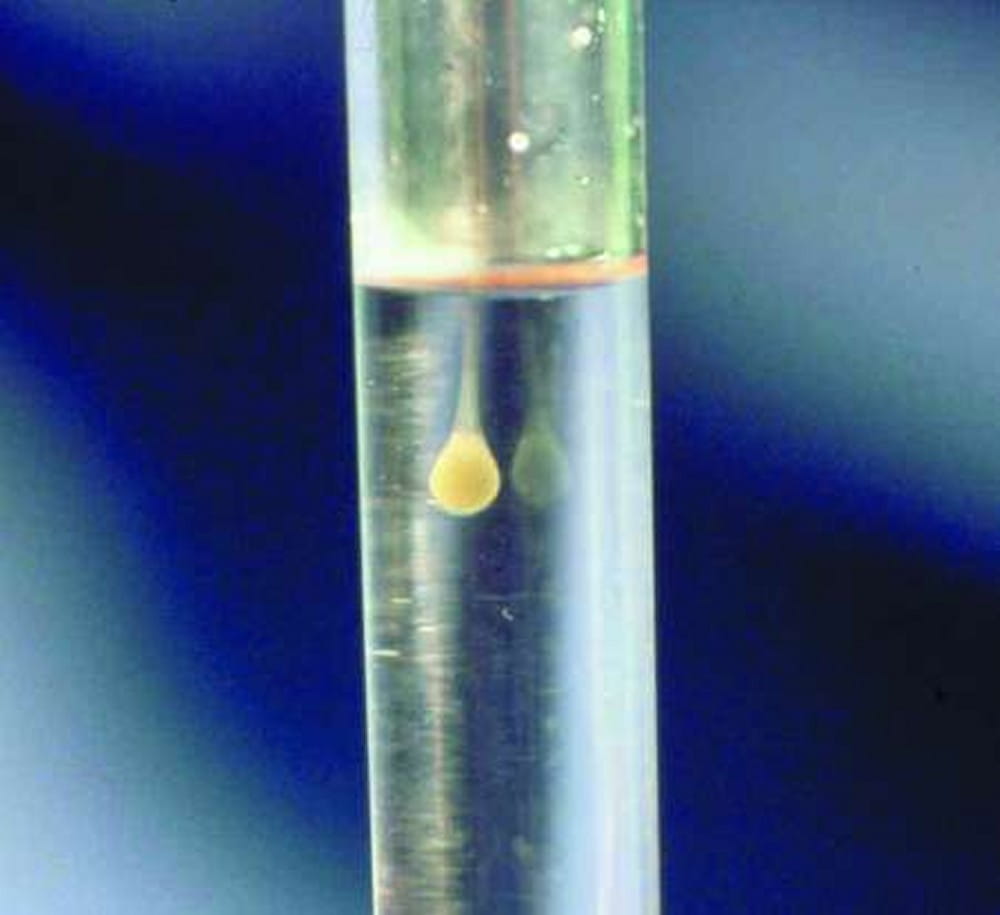
Positive Rivalt test in a cat with wet FIP
- Clear, viscous, yellow, rich in proteins
- Protein background
- TP above 35 g/l
- Few cells (<5x 109/L)
- Macrophages, non-degenerate neutrophils, fewer lymphocytes
- AGP in effusion
- Rivalta’s test – positive is not definitive, but negative excludes FIP
- PCR on effusion
- High in FIP cats – 72-89 % cases
- A negative result does not rule out FIP
- High specificity (amplification is rarely possible even in non-FIP cats)
- Dg FIP: young patient, suggestive history, clinical examinations and laboratory findings: high protein + few cells in effusion + PCR positive = FIP very likely
The final diagnosis itself belongs to the veterinarian. Needless to say, you should have a really good vet.